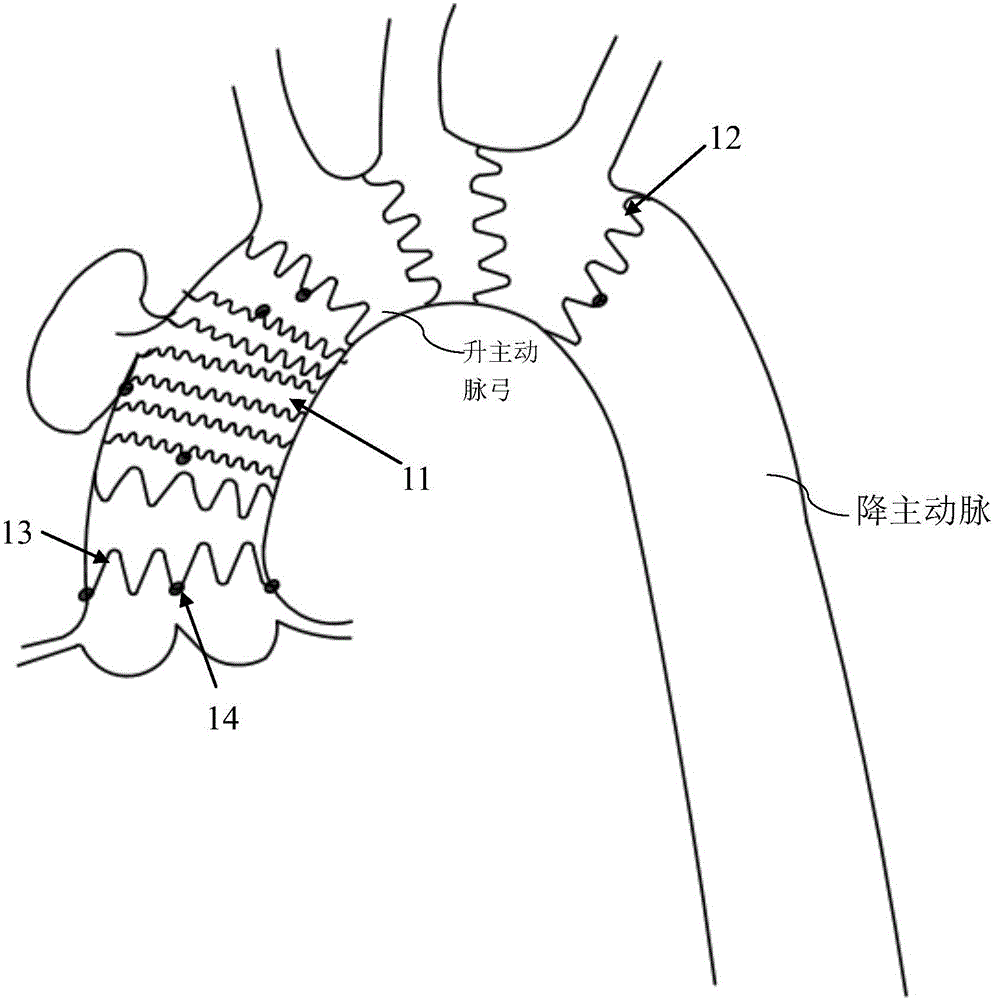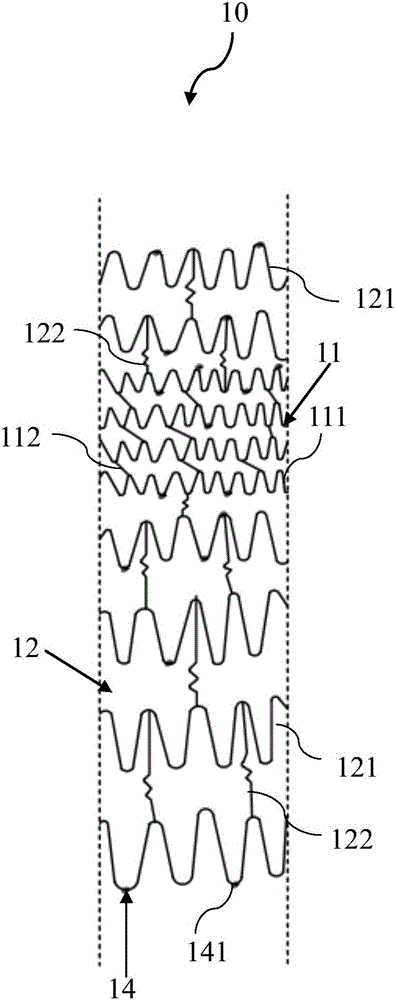Isolating transplanting devicein aorta ascendens cavity
An ascending aorta and intracavitary isolation technology, applied in the field of medical devices, can solve problems such as surgical failure, difficult anchoring, and covering of vascular branches, so as to reduce the risk of vascular injury, avoid re-rupture, and facilitate delivery
- Summary
- Abstract
- Description
- Claims
- Application Information
AI Technical Summary
Problems solved by technology
Method used
Image
Examples
Embodiment Construction
[0023] The specific implementation manners of the present invention will be described below in conjunction with the accompanying drawings.
[0024] figure 1 It is a structural schematic diagram of the ascending aorta endoluminal isolation graft device installed in the ascending aorta lumen in this embodiment; figure 2 It is a structural schematic diagram of the ascending aortic endoluminal isolation grafting device in the embodiment of the present invention.
[0025] Such as figure 1 and figure 2 As shown, the ascending aortic endoluminal isolation grafting device 10 is a metal tubular bare stent, which is used for minimally invasive treatment of ascending aortic dissection, and includes a reset adjusting part 11, an anchoring part 12, an auxiliary anchoring part 13 and a developing marking part 14.
[0026] The reset adjustment part 11 includes a plurality of first Z-shaped stent rings 111 and a first elastic metal rod 112 connecting two adjacent first Z-shaped stent ri...
PUM
| Property | Measurement | Unit |
|---|---|---|
| Wave height | aaaaa | aaaaa |
| Length | aaaaa | aaaaa |
| Width | aaaaa | aaaaa |
Abstract
Description
Claims
Application Information
 Login to View More
Login to View More - R&D
- Intellectual Property
- Life Sciences
- Materials
- Tech Scout
- Unparalleled Data Quality
- Higher Quality Content
- 60% Fewer Hallucinations
Browse by: Latest US Patents, China's latest patents, Technical Efficacy Thesaurus, Application Domain, Technology Topic, Popular Technical Reports.
© 2025 PatSnap. All rights reserved.Legal|Privacy policy|Modern Slavery Act Transparency Statement|Sitemap|About US| Contact US: help@patsnap.com


